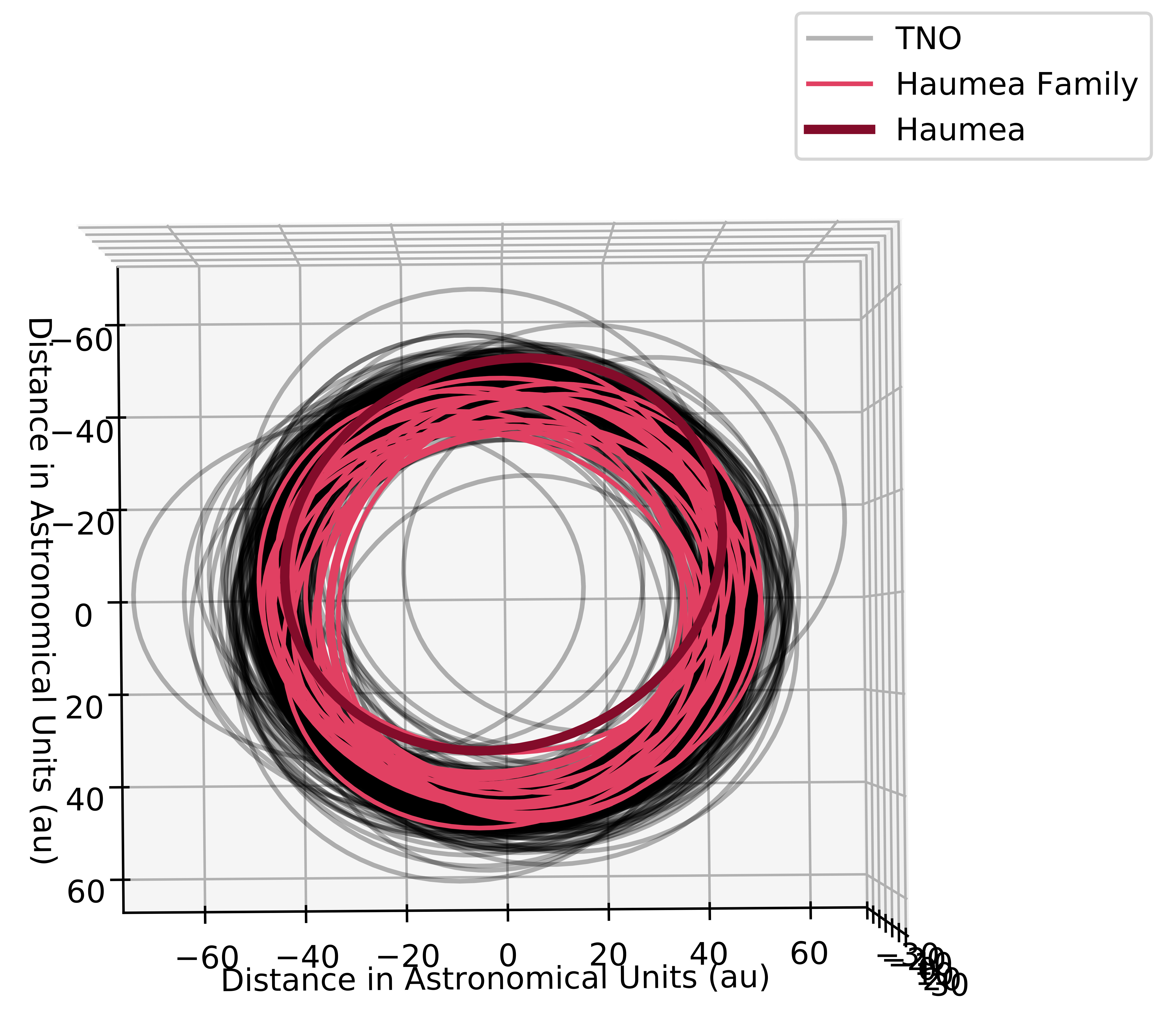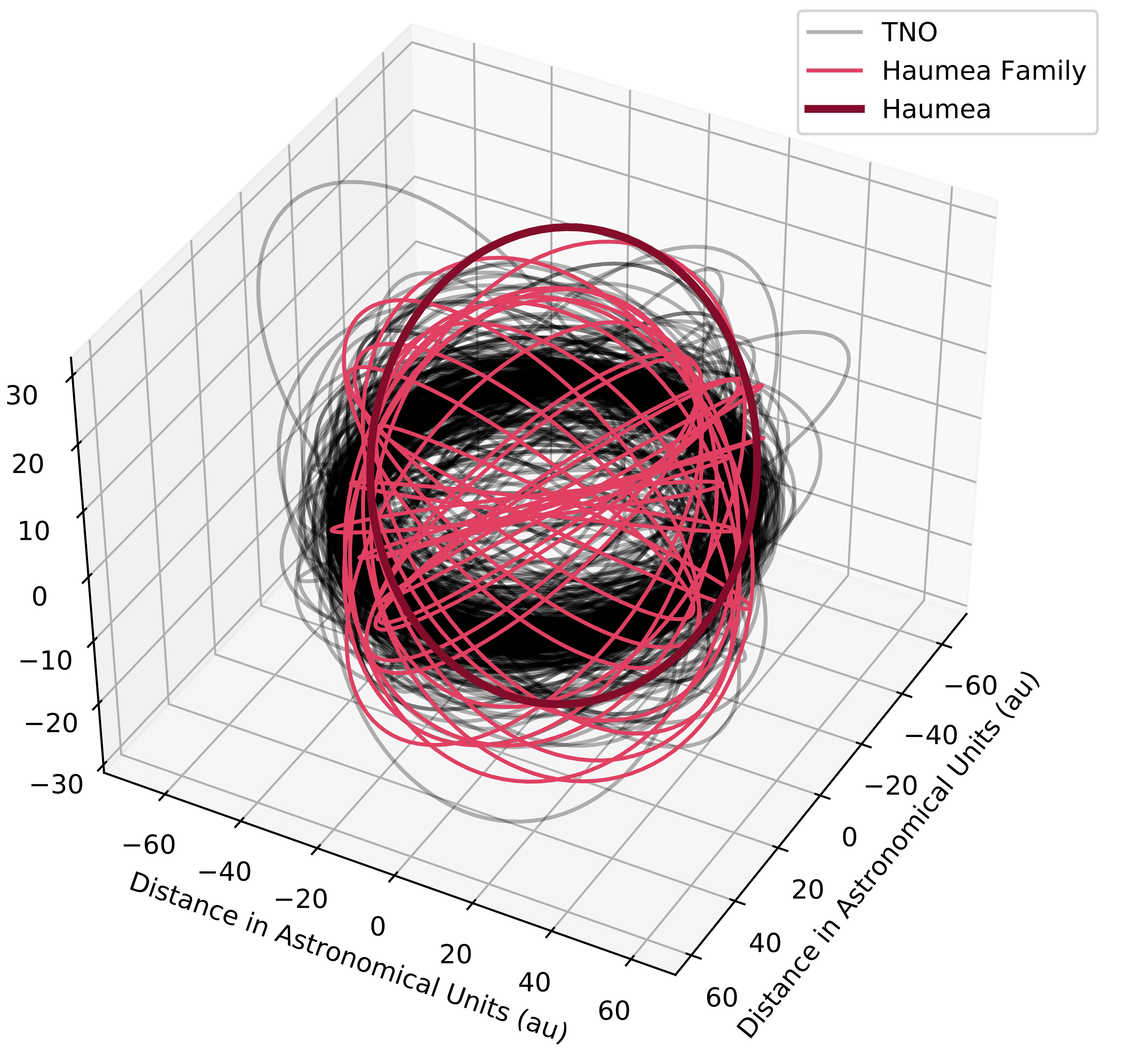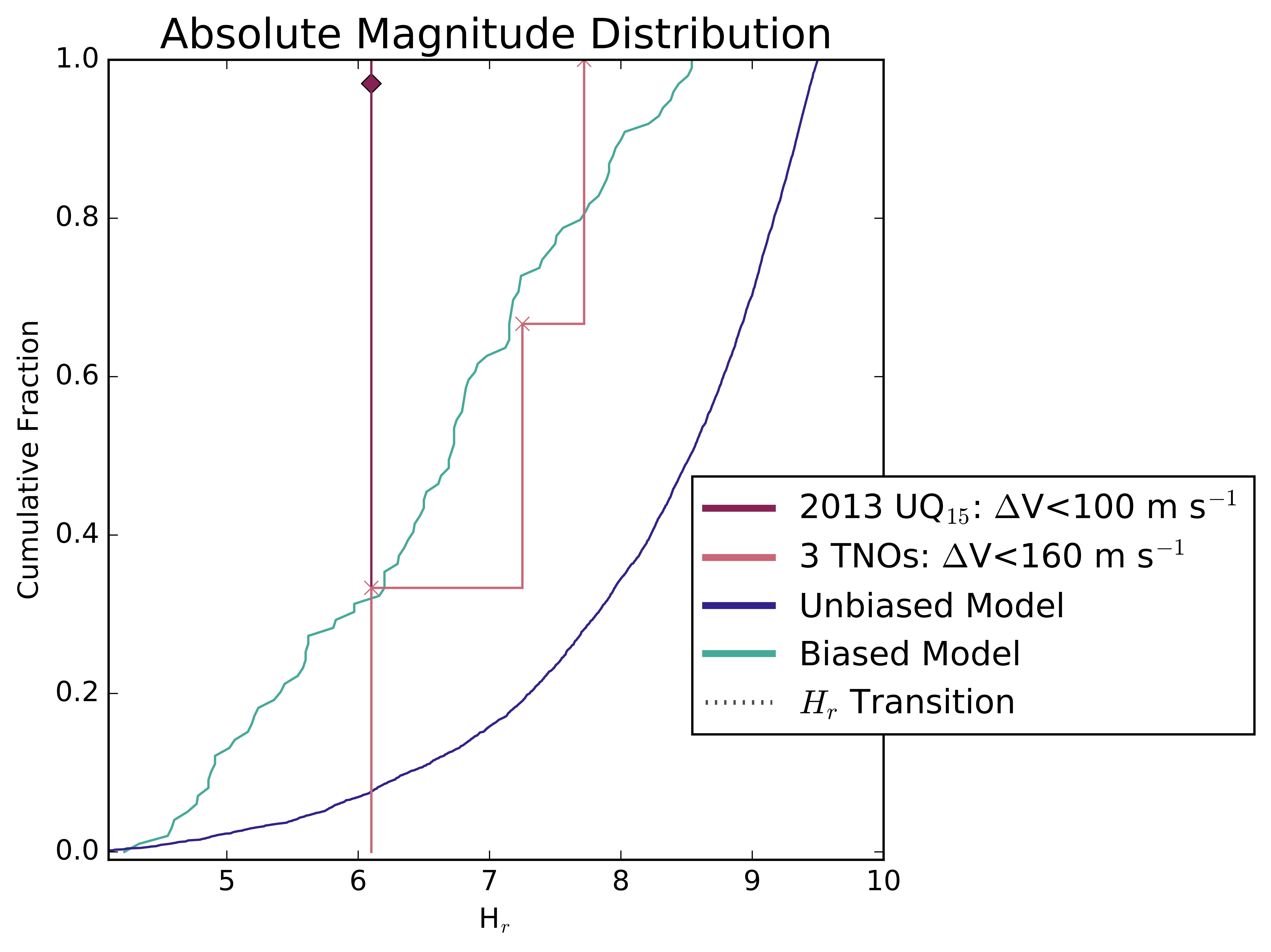The Search for Icy Collisional Remnants in the Outer Solar System
Published in Astronomy

The Haumea family is thought to have formed as a result of a collision several billion years ago. This collision resulted in a family of objects with similar orbits and surface properties. Haumea itself is an exciting object- it is elongated and has a red spot on one side. Haumea also hosts two moons and rings! All of these properties are indications of possible collisions in the past, but the orbit and surface features of Haumea are the smoking gun for identifying the family.
Based on the orbit and surface composition of Haumea, previous researchers were able to identify a family of small, icy bodies associated with the dwarf planet Haumea. Haumea has a relatively unusual orbit, it is highly inclined and spends much of its time significantly above or below the plane of the solar system. The surface of Haumea contains significant amounts of water-ice, which has been identified using spectroscopy. For objects too faint for spectroscopy, is also possible to determine whether they likely have water-ice surfaces by using broad-band photometry. Objects with water-ice surfaces have optical and near-infrared colors similar to solar colors, often referred to as neutral surfaces. Many small TNOs have been found which share the orbital and surface characteristics of Haumea. These are thought to be collisional remnants from the collision in Haumea's past, and are referred to as the Haumea family.


As a member of the Outer Solar System Origins Survey (OSSOS) team, I was involved in the search for new TNOs as well as a large program on Gemini Observatory to measure the surface colors of the bright objects. We discovered that one of the objects had an orbit and color expected for a Haumea family member. Because we only measured colors on approximately the brightest 10% of the survey, I realized that there should be many more Haumea family members discovered in the survey. The 10-15 family members I expected to find would have provided powerful constraints on the orbital distribution of the family as well as the size distribution.
I looked at the detection lists for our large surveys, and found surprisingly few Haumea family member candidates. The ones I found were farther from typical orbital parameters than most published candidates. However, the published work was several years old, so I discussed the classifications with Darin Ragozzine and Ben Proudfoot. Darin and Ben were working on a project modeling the family formation and distribution, and classifying TNOs detected in surveys for membership in the Haumea family. We combined our expertise to carefully classify the OSSOS survey detections, and determined that 1-3 objects were likely Haumea family members.
We had confirmed that there were many less Haumea family members than expected in the OSSOS surveys! In particular, there are not enough small objects. We quantified this result by testing the size distribution of the Haumea family- how many small objects relative to large objects the family includes. I tested several size distributions, and determined that an exponential distribution with a single shallow slope well describes the Haumea family population. This shallow slope would produce detections in the OSSOS survey which well-match the real detections.

The shallow slope for the size distribution provides a critical constraint on the formation of the Haumea family. The shallow slope conclusively rejects the formation of the family through a catastrophic collision, where the impactor is immediately destroyed. It is exactly what we expect for a graze and merge collision, where the impactor and Haumea have a grazing collision, then the impactor slows and returns to join with the larger body. However, this collision causes material to be ejected by being spun off the primary after the collision, which creates an orbital distribution that does not match the distribution of the known family members. There are still many unanswered questions about the Haumea family, and future work will focus on exploring possible formation mechanisms which produce a shallow slope to the size distribution of the family as well as an isotropic orbital distribution.
Follow the Topic
-
Nature Astronomy

This journal welcomes research across astronomy, astrophysics and planetary science, with the aim of fostering closer interaction between the researchers in each of these areas.
Related Collections
With Collections, you can get published faster and increase your visibility.
Progress towards the Sustainable Development Goals
Publishing Model: Hybrid
Deadline: Ongoing




Please sign in or register for FREE
If you are a registered user on Research Communities by Springer Nature, please sign in